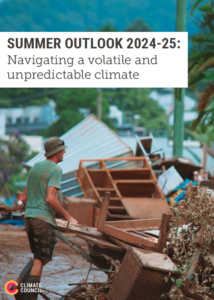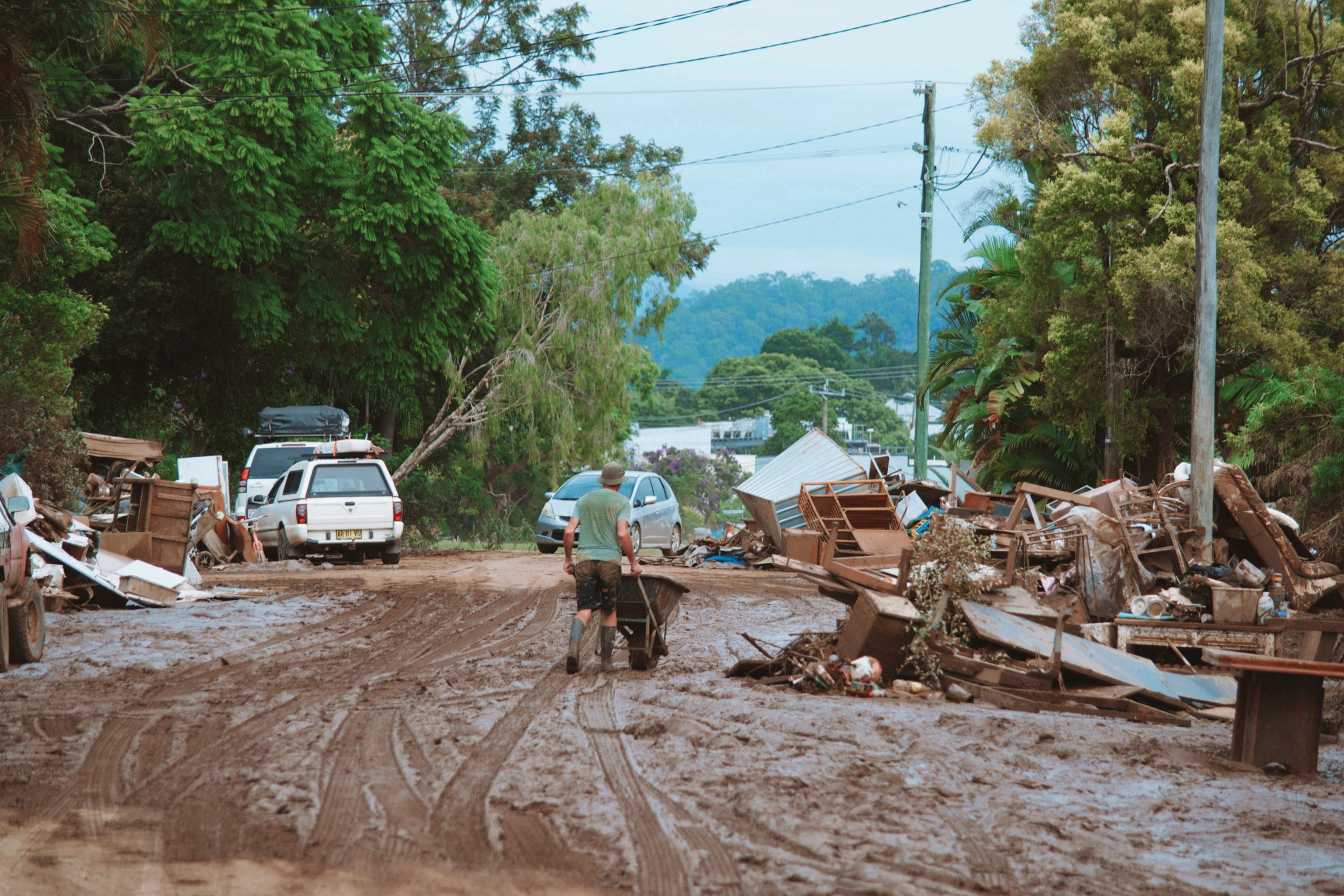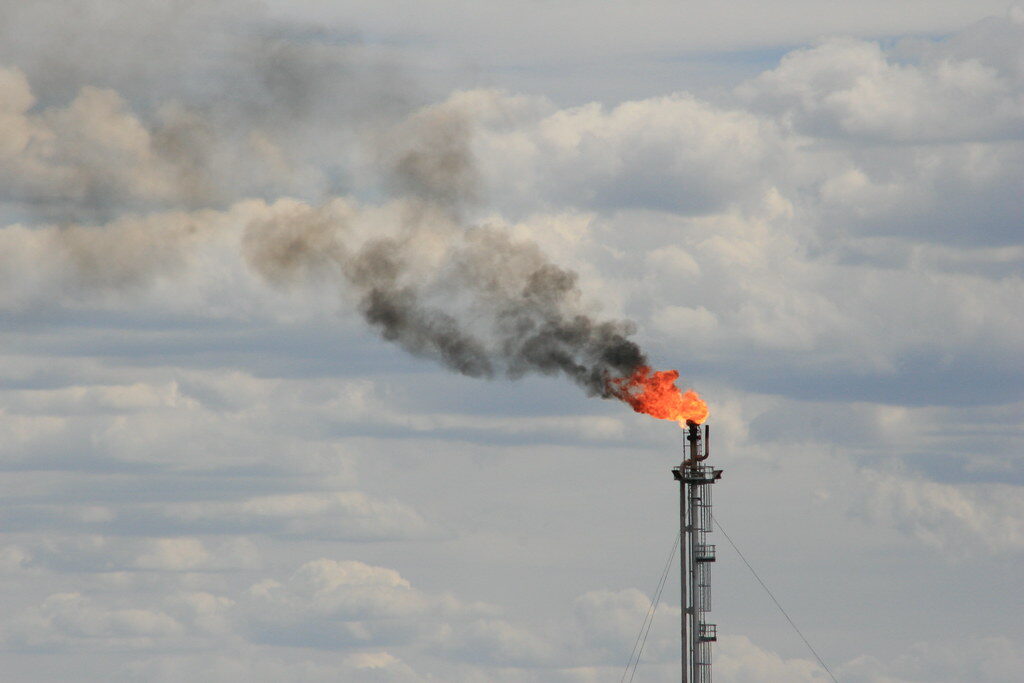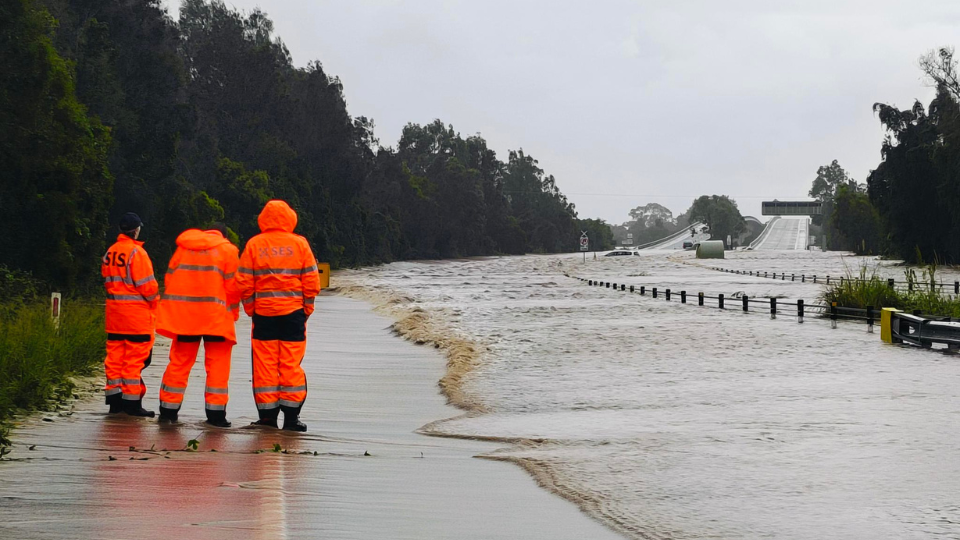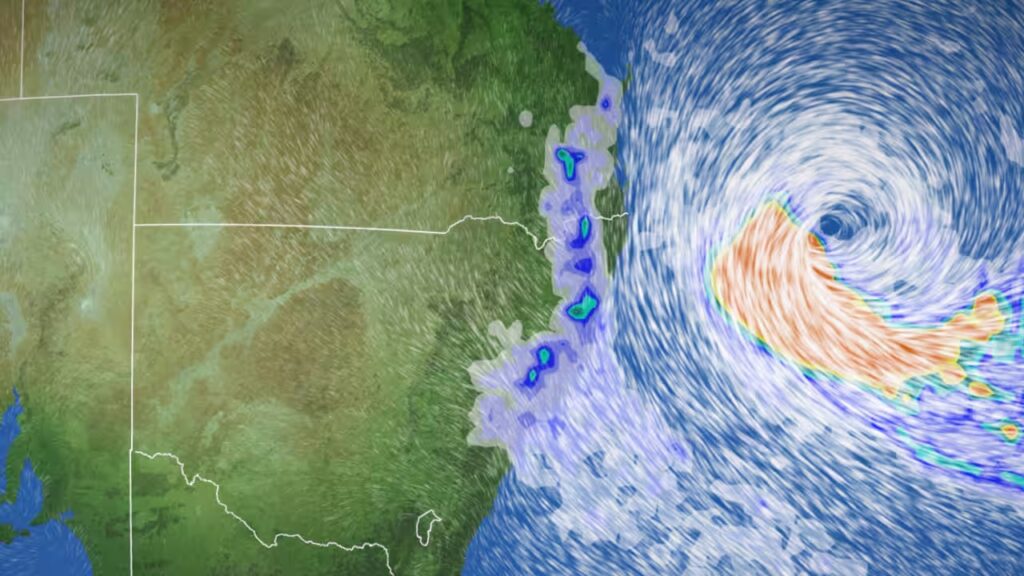Climate pollution is making our weather more volatile and unpredictable. Summer is no longer a season of fun. It can also be a season of dread.
This Climate Council briefing paper summarises key findings of the Bureau of Meteorology’s summer 2024-25 long-range forecast and the National Council for Fire and Emergency Services’ (AFAC) Seasonal Bushfire Outlook Summer 2024. It describes record-breaking global temperatures and the influence of climate pollution on extreme weather events. The briefing then unpacks how our weather is becoming more volatile and unpredictable in a supercharged climate.
Extreme weather conditions to be prepared for this summer include heatwaves, powerful tropical cyclones, heavy rainfall and flooding (BoM 2024a, BoM 2024b). Dry periods and forecast hotter than average days and nights raise concerns for summer fires in parts of southern Australia (AFAC 2024).
Key insights
1. The 2024-25 Australian summer is shaping up to be hotter, wetter and more chaotic.
- Heatwaves and extreme heat with little reprieve overnight are on the cards for many Australians. The Bureau is expecting above average maximum temperatures for large parts of Australia, and above average minimum temperatures across almost all of Australia. There is an increased chance of unusually high maximum temperatures across Tasmania, western WA, parts of south-eastern South Australia and western Victoria.
- We could see intense rainfall and possible flooding in parts of eastern and north-western Australia. December is being forecast to be particularly wet, with unusually high rainfall tipped for parts of Queensland’s coast, Cape York Peninsula, southern New South Wales, eastern parts of Victoria, Tasmania and South Australia, northern Western Australia and parts of the interior.
- Last summer highlighted the complex interaction of different climate drivers against the backdrop of a rapidly overheating planet. Our weather is now more extreme and erratic, because of pollution from the burning of coal, oil and gas, and we need to be prepared for anything.
2. Climate pollution from coal, oil and gas has overheated our planet, and changed the rulebook. History may no longer be the best guide for what’s next.
- By digging up and burning coal, oil and gas, humans are overheating our planet and have tipped our Earth System out of balance. Last year was the hottest year on record, and it is almost certain that 2024 will eclipse it.
- Everything we experience today is an ocean-atmosphere system made hotter, wetter and more energetic by burning fossil fuels. So when storms or tropical cyclones develop they have the potential to become more destructive.
- Fire weather is being supercharged by higher temperatures, stronger winds and shifts in rainfall that make vegetation drier and fire seasons longer and more destructive. This also shrinks windows when it is safe or possible to do hazard reduction burning.
- Extreme rainfall and flooding is now possible in any year, even if climate drivers like El Niño load the dice towards drier conditions.
- Ocean surface temperatures broke records in the first half of 2024. Marine heatwaves are occurring more often, and lasting longer, which threatens fragile ecosystems like the Great Barrier Reef and Ningaloo.
3. We are now at higher risk of compounding events – multiple extreme events that occur at the same time, or in rapid succession, in different parts of the country.
- As the frequency of different types of unnatural disasters increases, so too does the likelihood of multiple events coinciding. For example, immediately following the Black Summer bushfires in New South Wales, people impacted by fires faced multiple flood emergencies over the following two years, seriously impacting community recovery.
- Compounding events place enormous strain on our communities, emergency responders, economy and nature.
- Extreme weather conditions to be prepared for this summer include heatwaves, powerful tropical cyclones, heavy rainfall and flooding. Dry periods and forecast hotter-than-average days and nights also raise concern for summer fires in the south west and far west of Victoria as well as parts of the northeast and Mornington Peninsula, parts of South Australia’s lower coastal southeast region and lower Eyre Peninsula, Western Australia’s southeastern coastline and central west, as well as central western and southern New South Wales.
4. This new era of climate-fuelled unnatural disasters is endangering all Australians, and making disaster and emergency management much more difficult and expensive.
- While long-range forecasters are usually very good at predicting average conditions over a given period, it is much harder to predict when and where short duration weather events – such as very intense downpours or thunderstorms – are going to strike.
- Australians are already experiencing climate whiplash, as they ricochet from one unnatural disaster to the next, with little time to prepare or recover.
- The further and faster we cut climate pollution this decade, the better the prospects for all Australians.
- Governments also need to focus on disaster preparation, response and recovery in the near-term, so emergency services, communities and households are all better equipped for and protected from escalating climate risks. This must include further investment in climate and weather information services to make sure we get the most accurate and up-to-date information possible.
